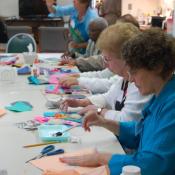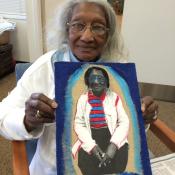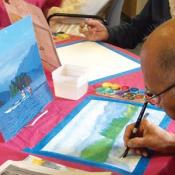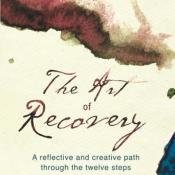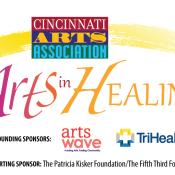arthdskghdkghdskg
IMPACT POINTS
Two-thids of older adults who frequently dance or play a musical instrument are less likely to develop dimentia.
9 out of 10 arts participants report meeting new people and making new friends through their arts experiences.
The arts literally make your brain grow. Participating in the visual arts for as little as 10 weeks has been shown to increase the resiliency and neural connectivity of the brain, making for increased self-awareness and better memory processing.
New friends and connections are a primary positive outcome of arts participation and help to reduce social isolation. In the UK, 91% of participants reported making new friends by participating in arts activities.
When older adults participate in the arts, they demonstrated statistically significant higher levels of five positive well-being indicators (interest, sustained attention, pleasure, self-esteem and normalcy).
Activities like dancing, playing an instrument, and reading lower the risk of dementia. Older adults who do at least 11 cognitive or physical activities per month are 63% less likely to have dementia.
Verghese, J. et al. (2003), Leisure Activities and the Risk of Dementia in the Elderly. New England Journal of Medicine. Retrieved 18 May 2018 from https://www.nejm.org/doi/full/10.1056/NEJMoa022252.
Stern, M. & Seifert, S. (2001). Culture Builds Communities Evaluation Summary Report. Philadelphia: Penn School of Social Policy & Practice, University of Pennsylvania. Retrieved 16 May 2023 from https://core.ac.uk/download/pdf/214208983.pdf
Bolwerk, A. et al. How Art Changes Your Brain: Differential Effects of Visual Art Production and Cognitive Art Evaluation on Functional Brain Connectivity. PLOS ONE, 2014, 9(7). Retrieved 16 May 2023 from
https://journals.plos.org/plosone/article?id=10.1371/journal.pone.01010…
Stern et al., 2001.
Kinney, J. M., & Rentz, C. A. (2005). Observed well-being among individuals with dementia: Memories in the Making, an art program, versus other structured activity. American Journal of Alzheimer’s Disease and Other Dementias, 20(4), 220–227. Reviewed 18 May 2018 in https://journals.sagepub.com/doi/pdf/10.1177/153331750502000406
Verghese, J. (2006). Cognitive and Mobility Profile of Older Social Dancers. Journal of the American Geriatrics Society 54(8), 1241.
EXAMPLES OF PRACTICE
Art for Everyone uses an interdisciplinary approach in artistic engagement to accommodate diversity, process, and enticement of participants to put their artistic expression in words, drawing, painting, and sculpture.
Using visual art, poetry, story and movement in various combinations, participants in Connecting Through Creativity use their imagination to learn about poets and artists while engaging in discussions, writing collaborative stories and poems, and
Cognitive Dynamics is a program that uses various artforms to work with people with cognitive disorders, such as Alzheimer’s, and their caregivers. The program provides education, research, and supportive, innovative care models that promote human
Artists who have been affected personally, through a family member or friend, or anyone whose art reflects recovery from mental illness or addiction are invited to participate. Artists display works ranging from painting and drawing to sculpture,
The Cincinnati Arts Association’s “Arts in Healing” Initiative integrates the performing and visual arts in medical and community healthcare settings and other non-traditional settings to promote community wellness and encourage our community
READING LIST
ORGANIZATIONS
The Foundation for Arts and Healing
The mission of the Foundation for Art & Healing is to use its position as a “bridge” to create and expand general awareness about art and healing, to bring forward through research and related explorations critical knowledge about art and healing and the relationship between them, and to help make this knowledge available at the individual and community level.
The Healing Power of ART & ARTISTS
The Healing Power of ART & ARTISTS (HPAA) is a growing global community of artists, advocates, and writers dedicated to raising awareness about how art serves as a positive catalyst for enhancing the well-being of individuals, society, and the environment. It believes that art has the power to heal, inspire, provoke, challenge, and offer hope.
The Arts Impact Explorer was made possible thanks to the generous support of the Mellon Foundation and the National Endowment for the Arts. Additional support provided by the Doris Duke Charitable Foundation.
of the Arts + Social Impact Explorer

